Lincoln University (New Zealand)
Lincoln University (Māori: Te Whare Wānaka o Aoraki) is a public university in New Zealand that was formed in 1990 when Lincoln College, Canterbury was made independent of the University of Canterbury. Founded in 1878, it is the oldest agricultural teaching institution in the Southern Hemisphere. It remains the smallest university in New Zealand (by enrolment) and one of the eight public universities. The campus is situated on 50 ha (120 acres) of land located about 15 km (9 mi) outside the city of Christchurch, in Lincoln, Canterbury.
Te Whare Wānaka O Aoraki | |
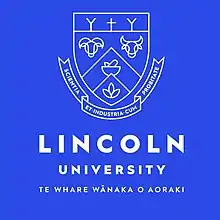 | |
Former name | Canterbury Agricultural College |
|---|---|
| Motto | Scientia et industria cum probitate (Latin) |
Motto in English | Science and industry with integrity |
| Type | Public agricultural research university |
| Established | 1878 1990 (university status) |
| Endowment | NZ$707,000 (31 December 2021)[1] |
| Chancellor | Bruce Gemmell[2] |
| Vice-Chancellor | Bruce McKenzie (acting)[3] |
Academic staff | 294 |
Administrative staff | 349 |
| Students | 2695 (EFTS, 2017) [4] |
| Undergraduates | 1577 |
| Postgraduates | 879 |
| 329 (2017) [5] | |
| Location | , New Zealand |
| Campus | University town 58 ha (143 acres) |
| Website | www.lincoln.ac.nz |
In 2018 Lincoln University had 2695 Equivalent Full Time Students (EFTS) and 633 full-time equivalent staff (188 Academic, 135 Administration and Support, 65 Research and Technical, 273 Farms and Operational).[6]
Lincoln University is a member of the Euroleague for Life Sciences.
History
.jpg.webp)
Lincoln University began life in 1878 as the School of Agriculture of Canterbury University College, opening in July 1880.[7] By 1885 it had 56 students, 32 of them in residence, and all classes were held in the main building (later known as Ivey Hall). The teaching staff included the head of the school William Ivey (who taught agriculture), George Gray (Chemistry and Physics), who remained on staff until 1915, Eric Manley Clarke (mathematics, surveying, and book-keeping; son of the English geodesist Alexander Ross Clarke),[8] and part-time lecturer Thomas Hill (Veterinary Science).[7][9]
The 660 acres (270 ha) college farm was worked by the students, who took part in ploughing, milking, and stock management, as well as taking lectures on agricultural science and chemistry.[7]
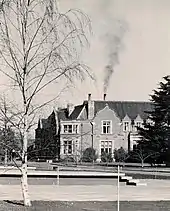
From 1896 to 1961 it served students under the name Canterbury Agricultural College, and offered qualifications of the University of New Zealand until that institution's demise. From 1961 to 1990, it was known as Lincoln College, a constituent college of the University of Canterbury, until achieving autonomy in 1990 as Lincoln University.[10] It is the oldest agricultural teaching institution in the Southern Hemisphere. It remains the smallest university in New Zealand.[11]
In March 2009, the Crown Research Institute AgResearch announced that it planned to merge with Lincoln University.[12] However, Lincoln University rejected the plan later that year over financial concerns.[13]
On 18 November 2010, after a period of consultation,[14] it was confirmed that a merger between Lincoln University and Telford Rural Polytechnic would go ahead, with the merger taking effect on 1 January 2011.[15]
On 18 June 2013, a new blueprint for the Selwyn campus was announced[16] which included the "Lincoln Hub" concept previously announced by the Government on 29 April 2013.[17]
Management and governance
List of directors, principals, and vice-chancellors
The School of Agriculture, followed by the Canterbury Agricultural College, was under the leadership of a director. From 1962, Lincoln College was headed by a principal, and after becoming Lincoln University in 1990, the role became that of vice-chancellor.[18][19]
| Name | Portrait | Term | |
|---|---|---|---|
| Director | |||
| 1 | William Ivey | 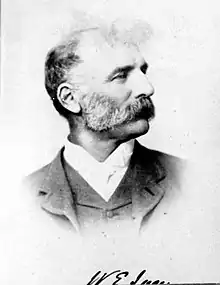 | 1879–1892† |
| – | George Gray (acting) |  | 1892–1893 |
| 2 | John Bayne |  | 1894–1901 |
| – | George Gray (acting) |  | 1901 |
| 3 | William Lowrie | 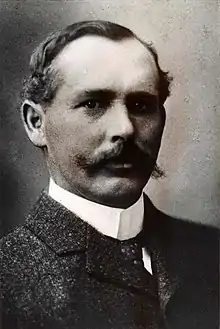 | 1901–1908 |
| – | George Gray (acting) |  | 1908 |
| 4 | Robert Edward Alexander |  | 1908–1935 |
| – | Frederick Hilgendorf (acting) |  | 1936 |
| 5 | Eric Raymond Hudson |  | 1936–1952 |
| 6 | Malcolm Burns | 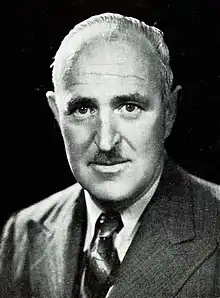 | 1952–1961 |
| Principal of Lincoln College | |||
| 1 | Malcolm Burns |  | 1962–1974 |
| 2 | James Stewart |  | 1974–1984 |
| 3 | Bruce Ross | .jpg.webp) | 1985–1989 |
| Vice-chancellor of Lincoln University | |||
| 1 | Bruce Ross | .jpg.webp) | 1990–1996 |
| 2 | Frank Wood | .jpg.webp) | 1997–2003 |
| 3 | Roger Field | .jpg.webp) | 2004–2012 |
| 4 | Andrew West | 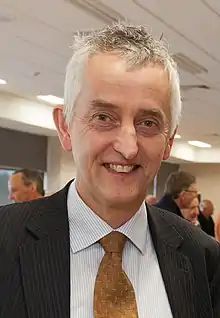 | 2012–2015 |
| 5 | Robin Pollard |  | 2016–2018 |
| 6 | James McWha | .jpg.webp) | 2018 |
| 7 | Bruce McKenzie |  | 2019–present |
List of chairs of the board of governors and college council, and chancellors
There was a board of governors from 1896 and a college council from 1962. Since full autonomy in 1990, the head of the university council has been the chancellor. The following chairmen and chancellors have served:[20]
| Name | Portrait | Term | |
|---|---|---|---|
| Chair of the Board of Governors | |||
| 1 | Henry Overton | .jpg.webp) | 1896–1899 |
| 2 | Edward Stevens | 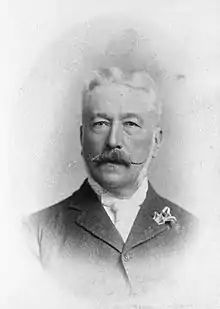 | 1899–1915 |
| 3 | Harry Knight | 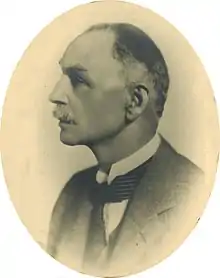 | 1915–1926 |
| 4 | Charles Chilton |  | 1927 |
| 5 | John Deans | .jpg.webp) | 1928–1929 |
| 6 | David Buddo |  | 1930 |
| 7 | Henry George Denham | .jpg.webp) | 1931–1935 |
| 8 | Charles Howard Hewlett | .jpg.webp) | 1936† |
| 9 | William Osborne Rennie |  | 1936–1944 |
| 10 | Bert Kyle |  | 1945–1948 |
| 11 | Christopher Thomas Aschman | .jpg.webp) | 1948–1950 |
| 12 | William Gillespie | 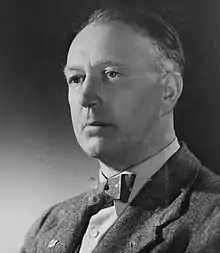 | 1951–1960 |
| 13 | Jim Holderness | .jpg.webp) | 1961 |
| Chair of the Lincoln College Council | |||
| 1 | Jim Holderness | .jpg.webp) | 1962–1967 |
| 2 | John McAlpine |  | 1968–1974 |
| 3 | Donald Bain | .jpg.webp) | 1974–1979 |
| 4 | Sid Hurst | .jpg.webp) | 1980–1985 |
| 5 | Allan Wright | .jpg.webp) | 1986–1989 |
| Chancellor of Lincoln University | |||
| 1 | Allan Wright | .jpg.webp) | 1990–1994 |
| 2 | Malcolm Cameron | .jpg.webp) | 1995–1999 |
| 3 | Margaret Austin |  | 2000–2004 |
| 4 | Tom Lambie | .jpg.webp) | 2005–2016 |
| 5 | Tony Hall | .jpg.webp) | 2016–2017 |
| 6 | Steve Smith |  | 2017–2018 |
| 7 | Bruce Gemmell |  | 2019–present |
† denotes that the person died in office
Student life
Lincoln University Students' Association (LUSA) has been active on campus since 1919.[21] LUSA acts as a representative for students on university policy, as well as providing advocacy services to students and running campus events such as the annual Garden Party and O-Week.
LUSA is central in organising, supporting and funding the clubs on campus. These clubs include but are not limited to; Lincoln Soils Society, Tramping and Climbing Club, Wine Appreciation Club, LSD (Lincoln Snowboarding Department), Alpine Club, LEO (Lincoln Environmental Organisation), Food Appreciation Club, The Lincoln University Campus Choir, Bunch Rides (cycling), Lincoln University Rugby Club, Lincoln Malaysian Students Society (LMSS), International Rugby Club, SPACE (lesbian, gay, bisexual and transgender students on campus), Boxing Club, Young Farmers Club, and Lincoln Christian Fellowship.[22]
In 2018 Lincoln University has 1369 international students (up 10% from the previous year) from 75 countries.[6]
Campus buildings

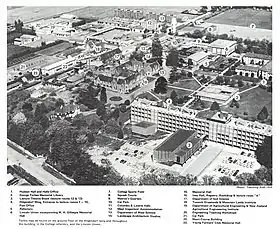
- The oldest building on campus is Ivey Hall, built in 1878 as the main teaching, administration, and residential building. It was designed in the Jacobethan style by Christchurch architect Frederick Strouts. As well as lecture theatres, laboratories, and a museum, the College Director William Ivey, his family, and the students resided here. A "West Wing" was added in 1881 for additional student accommodation and study rooms (West Ivey was damaged in the 2010 Canterbury earthquake and remains closed). Extensively remodelled and expanded in 1989, Ivey Hall now houses the George Forbes Memorial Library.
- Memorial Hall, designed by Cecil Wood, was built in 1923–24 to commemorate the loss of former Lincoln students who died in World War I; two thirds of the costs were raised by the Old Boy's Students' Association. It later commemorated the dead of World War II. Extensively damaged along with Ivey West in the 2010 Canterbury earthquake, it is now closed to the public and awaiting repair.
- The Laboratories were built in 1929, and became the McCaskill Building, before being replaced by the School of Landscape Architecture Building in 2009.
- The Lodge, a residence for the College Principal, was built in 1945. Until this time the Principal and his family had lived in Ivey Hall.

- The first major hall of residence on campus was Hudson Hall, named after College Principal Eric Hudson: its foundation stone was laid by Prime Minister Peter Fraser in July 1949, and it opened in 1953. Hudson Hall had bed and study accommodation for 184 students. It is now largely an administration building.
- Lincoln University has six halls of residence, of which Hudson Hall is the oldest. Colombo Hall, Lowrie Hall and Stevens Hall all opened in 1970, with Centennial Hall opening in 1978, Lincoln University's centenary year. The newest hall of residence is Southland Hall, built in 1993.
- The George Forbes Building, named after former Prime Minister George Forbes, began construction in 1957 and opened in 1960. This was the college's first purpose-built library, housing 10,000 books. Over the years the library expanded, and the present high-rise building was constructed in 1975. The library eventually outgrew the Forbes Building, and the George Forbes Memorial Library has been housed in Ivey Hall since 1989.
- Gillespie Hall, also known as the Student Union or Lincoln Union, consists of three buildings (Union, Annex, and Link) designed and built between 1962 and 1988. It was named after former Chairman William Gillespie, who had died in 1960. After the 2010 earthquake it was considered earthquake prone, and has been closed since 2010.
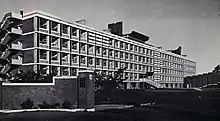
- The Hilgendorf Building, constructed in 1968, was designed to cater to 550 full-time students. Named after early Lincoln lecturer Frederick William Hilgendorf, it was a concrete brutalist building, and was badly damaged in the 2010 earthquake and closed for repair. After engineering testing it was deemed unsalvageable and was demolished in 2015.
- The Hilgendorf's companion, the Burns Building, was constructed in a similar style, and the complex of two buildings with their lecture theatres and computer centre were often referred to as the Hilgendorf Wing and Burns Wing. Named after past Principal Malcolm Burns, Burns opened in 1976.
- The Stewart Building, which opened in 1990, is named after another past Principal, James D. Stewart. With two large lecture theatres each seating several hundred, its computerised teaching aids and audiovisual capacity were considered cutting-edge for New Zealand in 1990.
- Built in 1990 to provide lecture and seminar space for a rapidly-increasing intake of Commerce students, the Commerce Building sits on what was the Ivey Hall gardens.
- The cafe and dining hall Mrs O's was built in 2011 to incorporate the original dining hall building, then redesigned for earthquake safety and reopened in 2014. It is named after Mrs Joan O'Loughlin, one of Lincoln College's longest-serving staff (1966–1998), a cleaner and tea attendant much-loved by students.
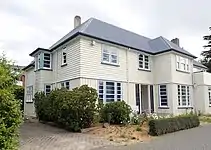 The Lodge
The Lodge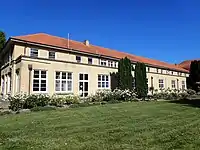 Hudson Hall
Hudson Hall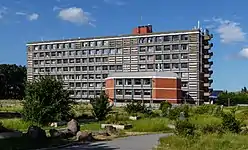 Burns Building
Burns Building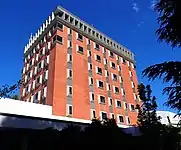 Forbes Building
Forbes Building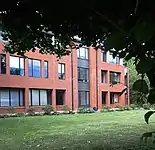 Commerce Building
Commerce Building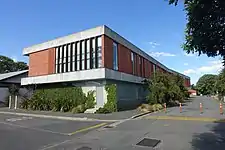 School of Landscape Architecture
School of Landscape Architecture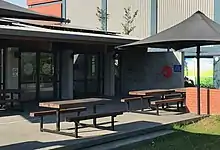 Mrs O's
Mrs O's The Lincoln Union, incorporating Gillespie Hall, in the 1970s
The Lincoln Union, incorporating Gillespie Hall, in the 1970s Memorial Hall in 2005. Currently closed to the public.
Memorial Hall in 2005. Currently closed to the public.
Academic units
- Faculty of Agribusiness and Commerce: accounting, business management, economics, farm management, finance, marketing and property studies.[23]
- Faculty of Agriculture and Life Sciences: agronomy, plant science, crop physiology, pasture production, animal science, systems biology, computational modelling, food and wine science, entomology; plant pathology and crop protection; ecology, conservation and wildlife management; evolution, molecular genetics and biodiversity.[24]
- Faculty of Environment, Society and Design: natural resources and complex systems engineering, environmental design, resource planning, transport studies, landscape architecture, Māori and indigenous planning and development, recreation management, social sciences, tourism, communication and exercise science.[25]
Research

Lincoln University has had an Entomology Research Collection since the late 1960s, which is now the third-largest entomology collection in New Zealand, containing approximately 500,000 specimens and about 60 types.
Rankings
| University rankings | |
|---|---|
| Global – Overall | |
| ARWU World[26] | 601–700 |
| QS World[27] | 319 |
| THE World[28] | 401–500 |
The New Zealand Tertiary Education Commission's first Performance Based Research Fund ranking exercise in 2003—equivalent to the United Kingdom's Research Assessment Exercise—ranked the quality of Lincoln University's research at sixth place. It also received the highest percentage increase in research funding.
For 2017/18 Lincoln's ranking is 319, released by Quacquarelli Symonds (QS) World University Rankings. Lincoln also has QS Five Stars rating. Lincoln ranks in the top 50 in the fields of Agriculture and Forestry (39th), and also Hospitality and Leisure Management (48th).[29] Lincoln is ranked in the 401–500th bracket according to the 2017 Times Higher Education (THE) world university rankings.[30]
Notable people
Alumni
- Richie McCaw – former All Blacks Captain
- Sam Whitelock – All Black
- Andy Ellis – former All Black
- Maggie Barry – National MP
- Col Campbell (1933–2012), TV/radio presenter
- Turi Carroll – President of the New Zealand Māori Council
- David Carter (born 1952), National MP and former Speaker of the House of Parliament
- Andy Dalton – former All Black captain
- Robbie Deans – former All Black and former Wallabies coach
- Jonathan Elworthy (1936–2005), former National MP[31]
- John Hayes (born 1948), former diplomat and current National MP
- Rodney Hide (born 1956), former ACT MP
- Mark Inglis – mountaineer
- Annabel Langbein – cook and author
- Don McKinnon (born 1939), former National MP[32]
- Jeremy Rockliff – Deputy Premier of Tasmania
- Toni Street – television host
- Reuben Thorne – former All Blacks Captain
- Charles Upham VC & Bar – most highly decorated Commonwealth soldier of WWII
- Wilson Whineray – former All Blacks Captain
Honorary degrees
Lincoln University has since 1993 been conferring honorary doctorates.
Rhodes Scholars from Lincoln
- 1940 Henry Garrett
- 1951 Lloyd Evans
- 1986 Forbes Elworthy
- 1991 Grant Edwards
- 2019 James Ranstead
See also
Notes
- "Lincoln University Foundation Anuual Report 2021" (PDF). Retrieved 1 December 2022.
- "Incoming Chancellor Bruce Gemmell". Lincoln University. 13 December 2018.
- "Lincoln University Council". Lincoln University New Zealand. Retrieved 15 December 2020.
- "AnnualReport2017". Lincoln University. 9 June 2017. Archived from the original on 11 April 2019. Retrieved 6 June 2018.
- "AnnualReport2017". Lincoln University. 9 June 2017. Archived from the original on 11 April 2019. Retrieved 6 June 2018.
- Lincoln University Annual Report 2018. Lincoln, New Zealand: Lincoln University. 2019.
- Mosley, M. (1885). Illustrated Guide to Christchurch and Neighbourhood. J. T. Smith and Co.
- "Obituary: Mr E. M. Clarke". The Press. Vol. LXVIII, no. 20459. 1 February 1932. p. 11. Retrieved 11 December 2019.
- "Obituary: Mr Thomas Hill". The Press. Vol. LIII, no. 16006. 14 September 1917. p. 5. Retrieved 11 December 2019.
- "Lincoln University profile". Lincoln University. Archived from the original on 25 June 2014. Retrieved 4 July 2007.
- "Lincoln University – Supply Chain Management Education". Edumaritime.net. Retrieved 13 December 2018.
- "AgResearch, Lincoln University merger planned". The New Zealand Herald. 10 March 2009. Retrieved 8 November 2019.
- Redmond, Adele (9 June 2017). "Lincoln University rejects merger proposal". Stuff.co.nz. Retrieved 10 July 2020.
2009: Plans to merge with AgResearch scrapped over financial concerns
- "Lincoln-Telford merger consultation document" (PDF). Lincoln University. 20 August 2010. Archived from the original (PDF) on 17 October 2015. Retrieved 22 May 2015.
- "Lincoln-Telford media release" (PDF). 18 November 2010. Archived from the original (PDF) on 24 September 2015. Retrieved 22 May 2015.
- "Lincoln University Selwyn Campus Master-Plan". Lincoln University. 18 June 2013. Archived from the original on 17 October 2015. Retrieved 22 May 2015.
- "Lincoln Uni global 'hub' planned". Stuff. 29 April 2013. Retrieved 22 May 2015.
- Blair 1978, p. 317.
- "Principals, Directors and Vice-Chancellors". Lincoln University Living Heritage: Tikaka Tuku Iho. Retrieved 11 December 2019.
- Blair 1978, Appendix 2.
- Lincoln University Students' Association. "A Brief History of LUSA". Archived from the original on 27 March 2009.
- "Clubs and Societies". Lincoln University Students' Association. Retrieved 8 February 2019.
- "Agribusiness and Commerce". lincoln.ac.nz. Lincoln University. Retrieved 18 December 2015.
- "Agriculture and Life Sciences". lincoln.ac.nz. Lincoln University. Retrieved 18 December 2015.
- "Environmental Society and Design". lincoln.ac.nz. Lincoln University. Archived from the original on 22 December 2015. Retrieved 18 December 2015.
- Academic Ranking of World Universities 2017
- QS World University Rankings 2018
- THE World University Rankings 2018
- "Lincoln University". QS World University Rankings. Quacquarelli Symonds. 2017. Retrieved 16 August 2017.
- "Lincoln University". Times Higher Education. Retrieved 16 August 2017.
- Gustafson 1986, p. 309.
- Gustafson 1986, p. 330.
References
- Blair, Ian Douglas (1978). The Seed They Sowed: Centennial Story of Lincoln College (PDF). Lincoln, New Zealand: Lincoln College. Retrieved 11 December 2019.